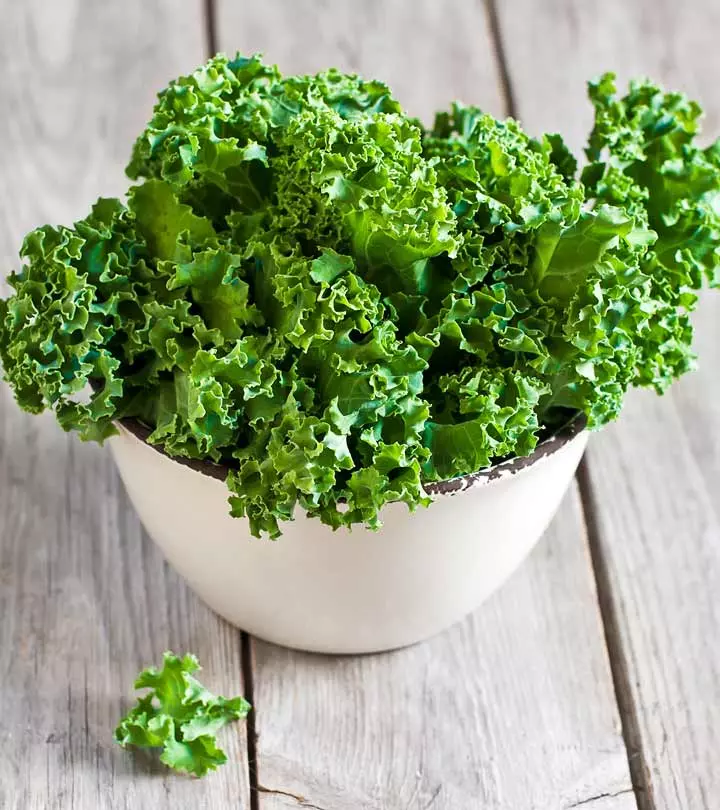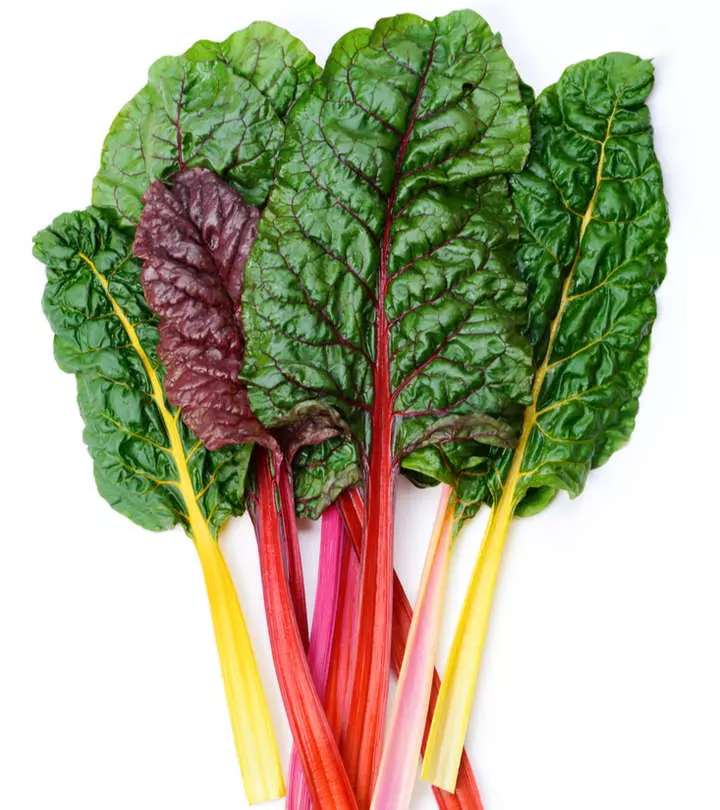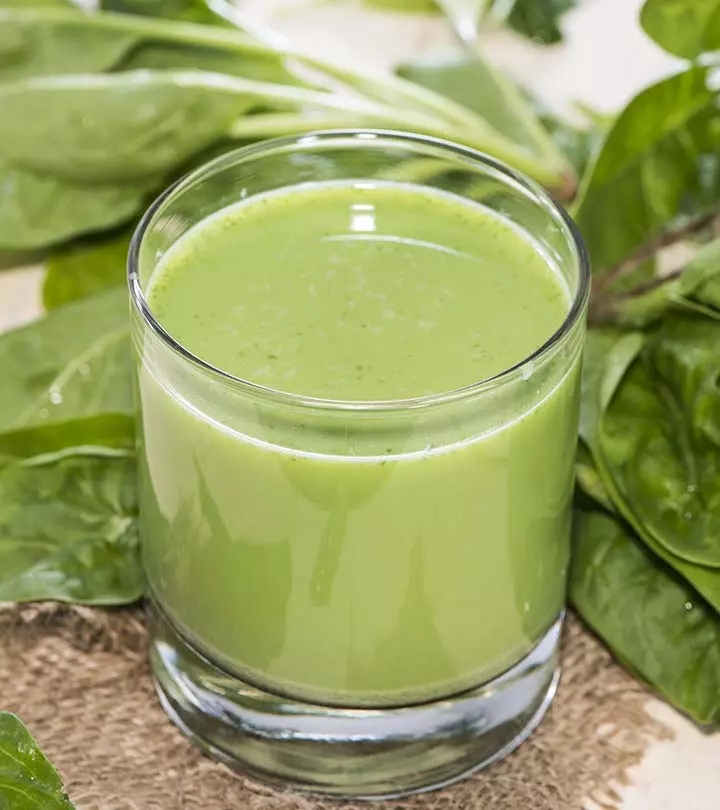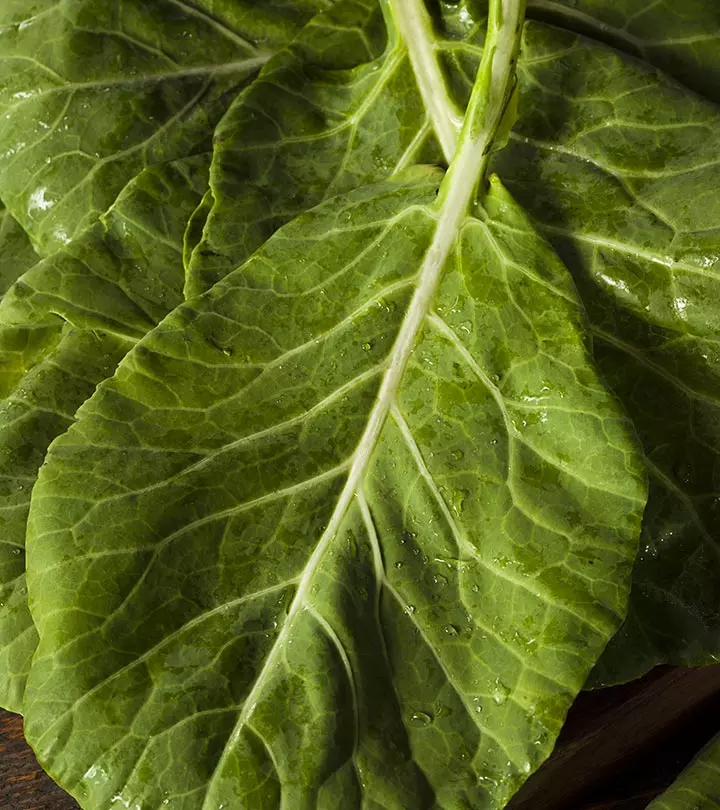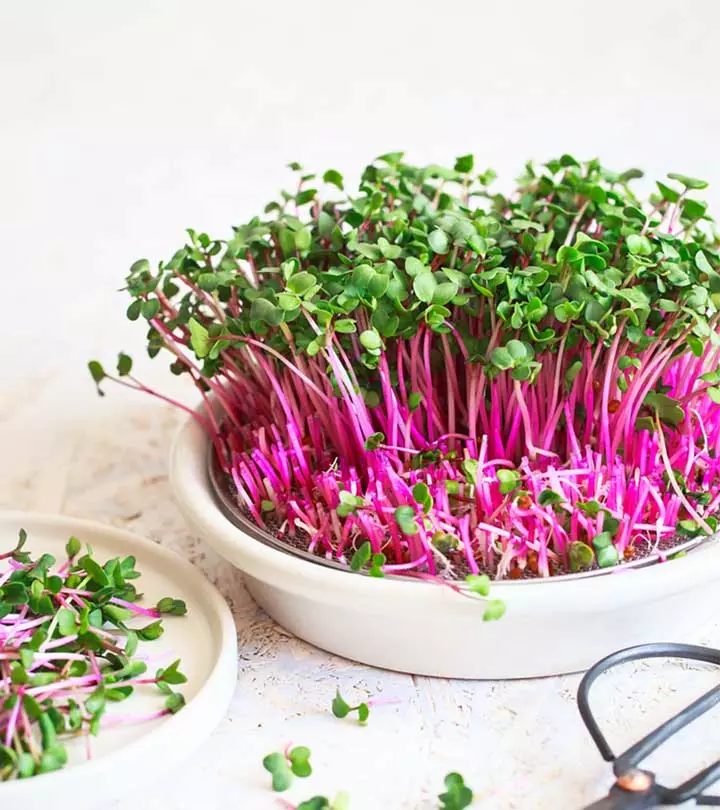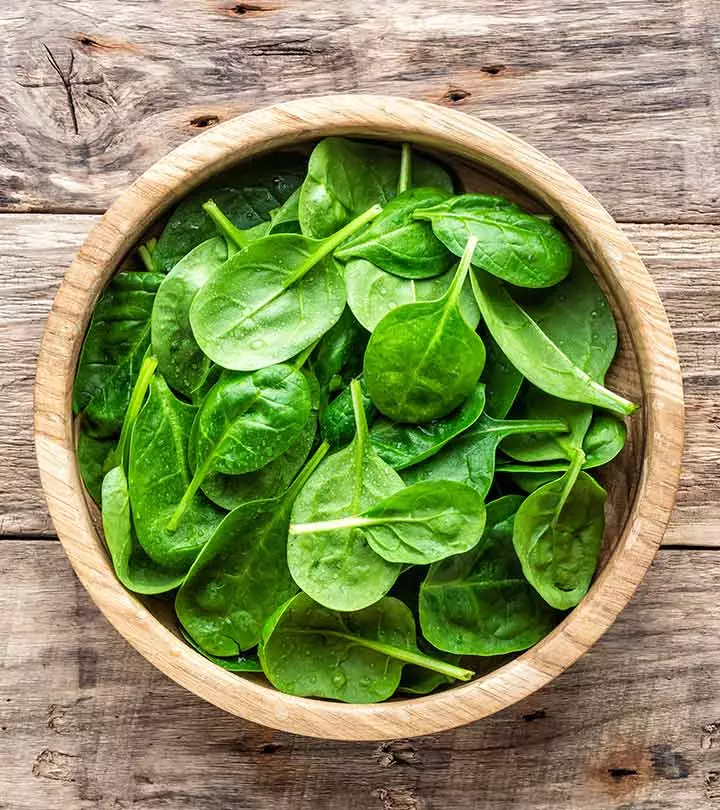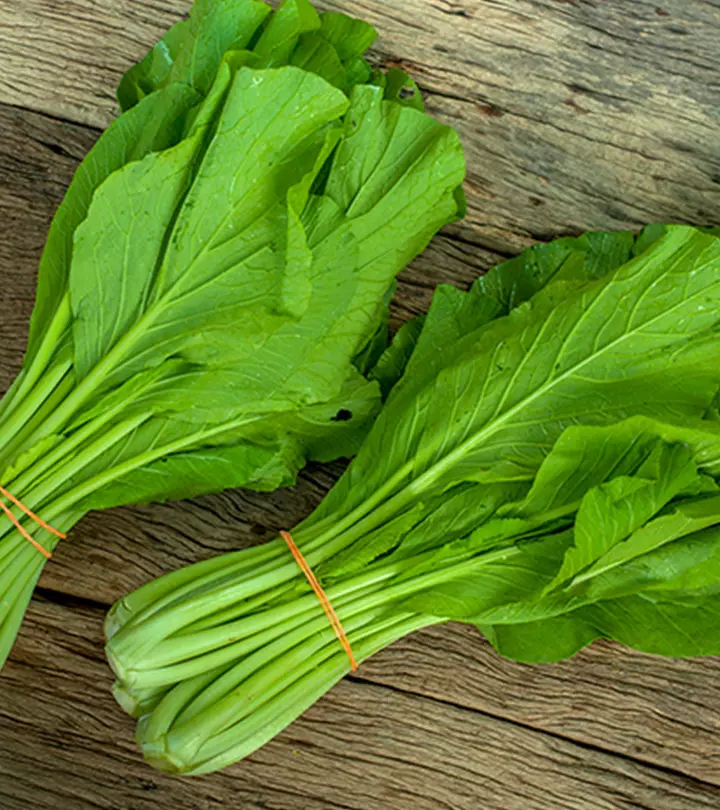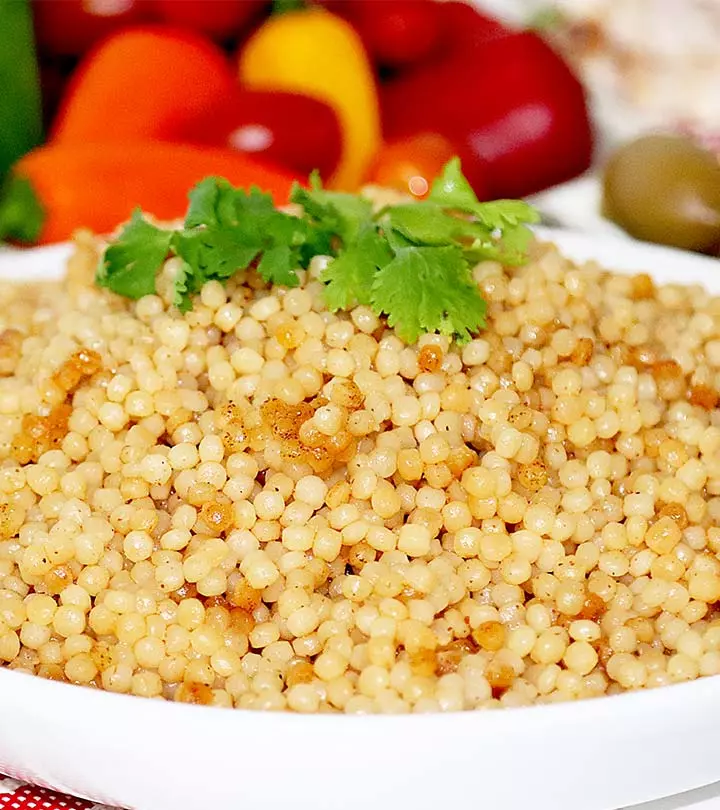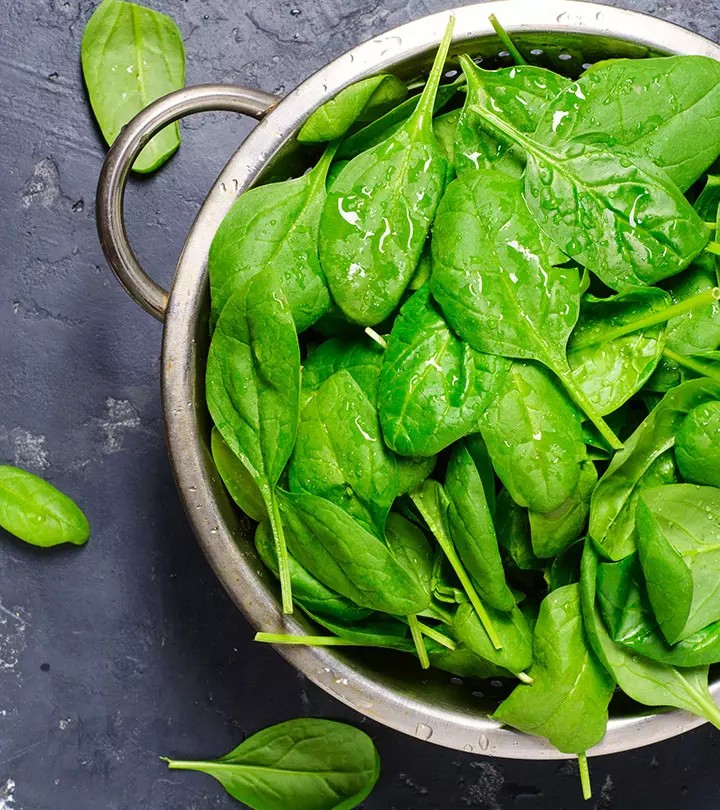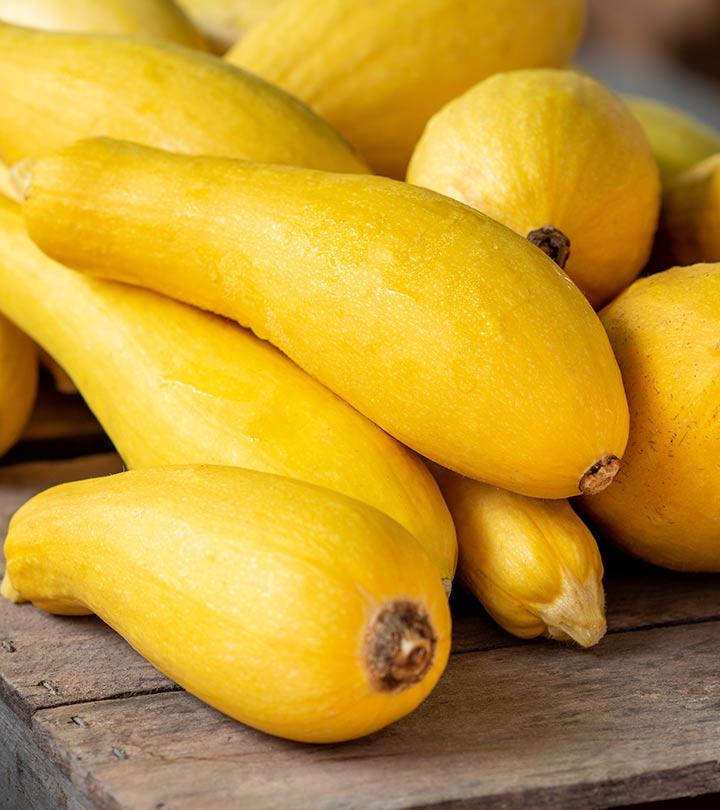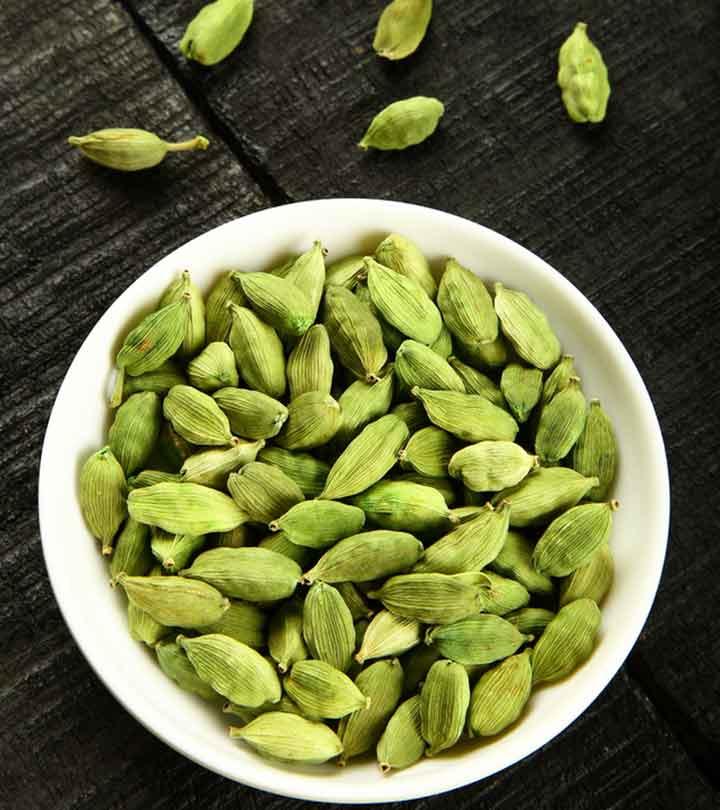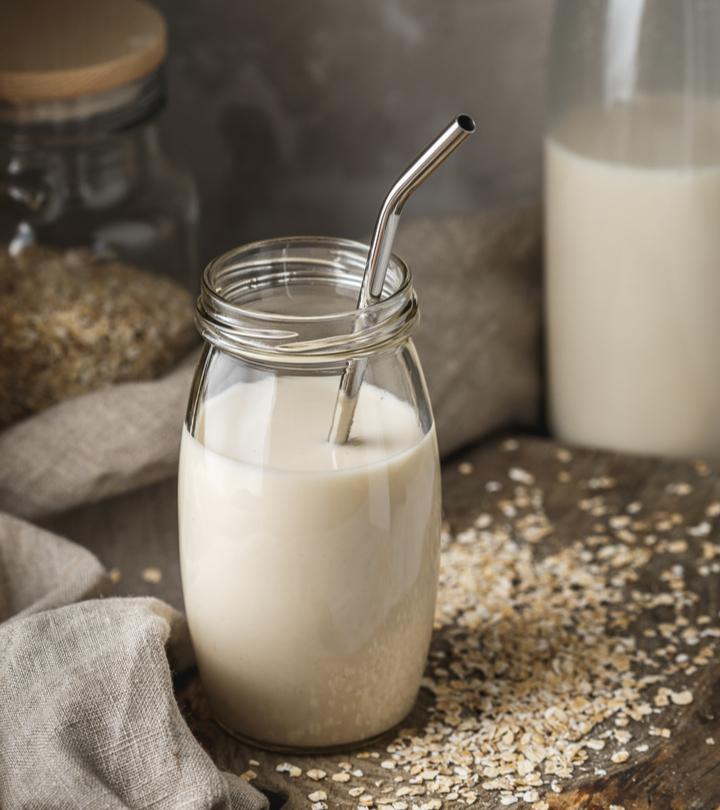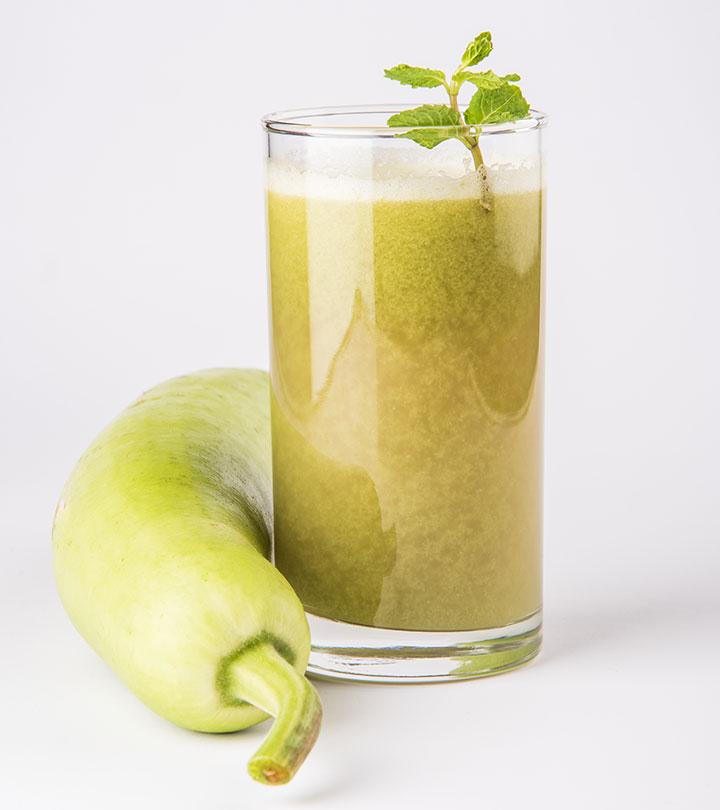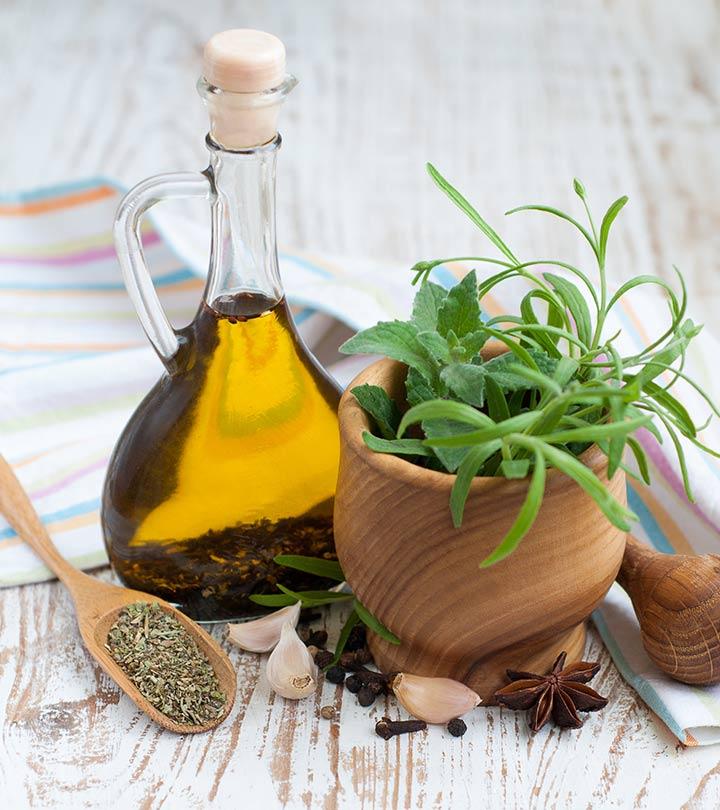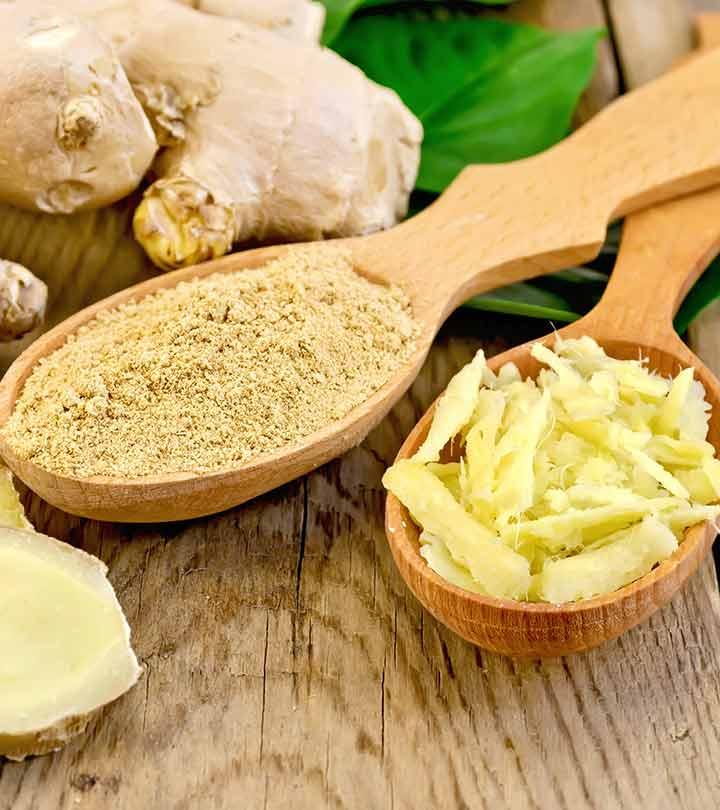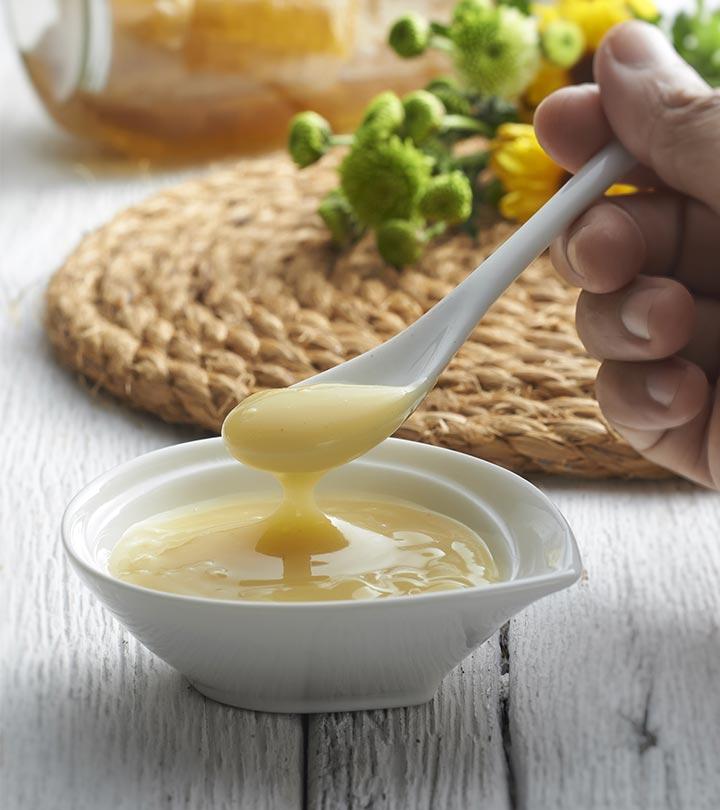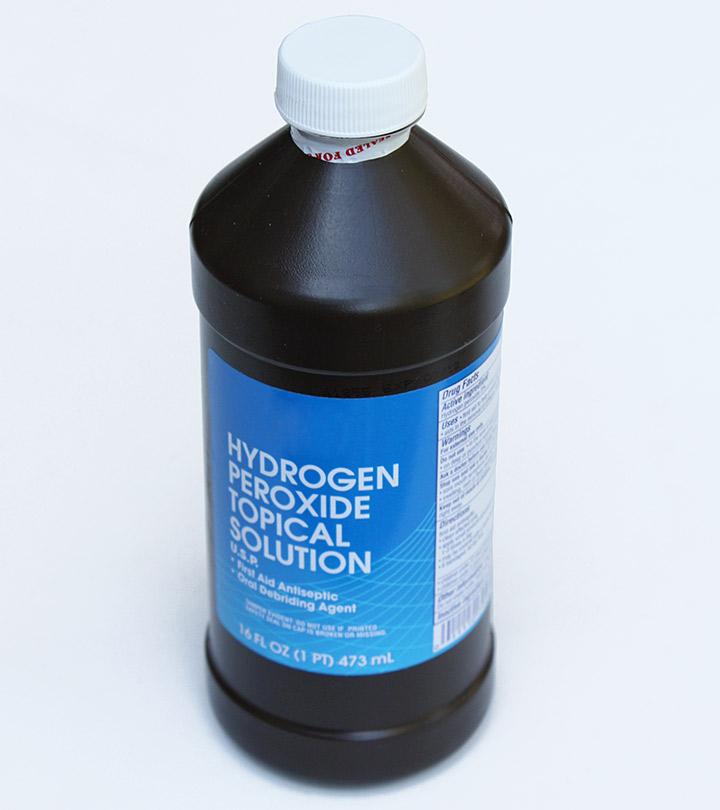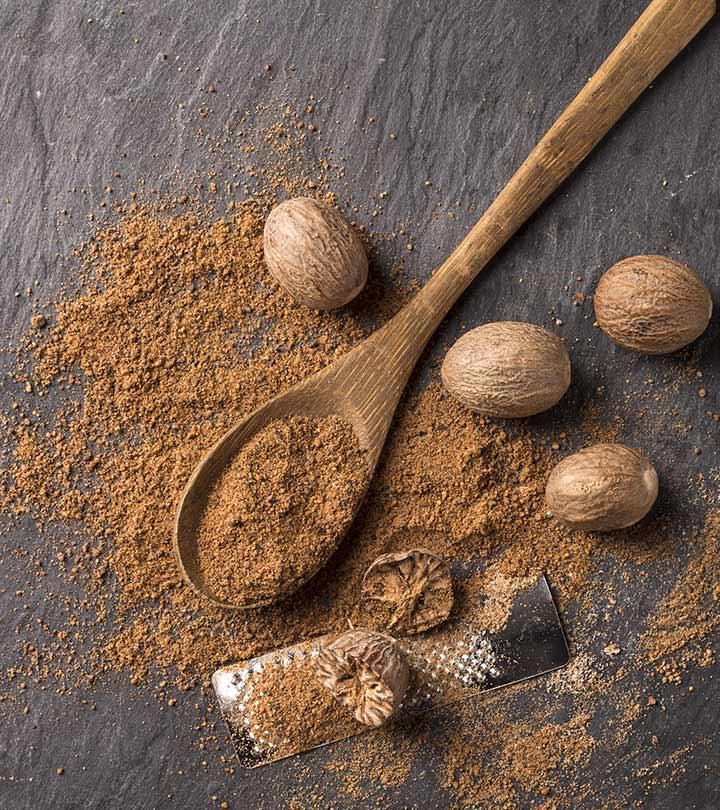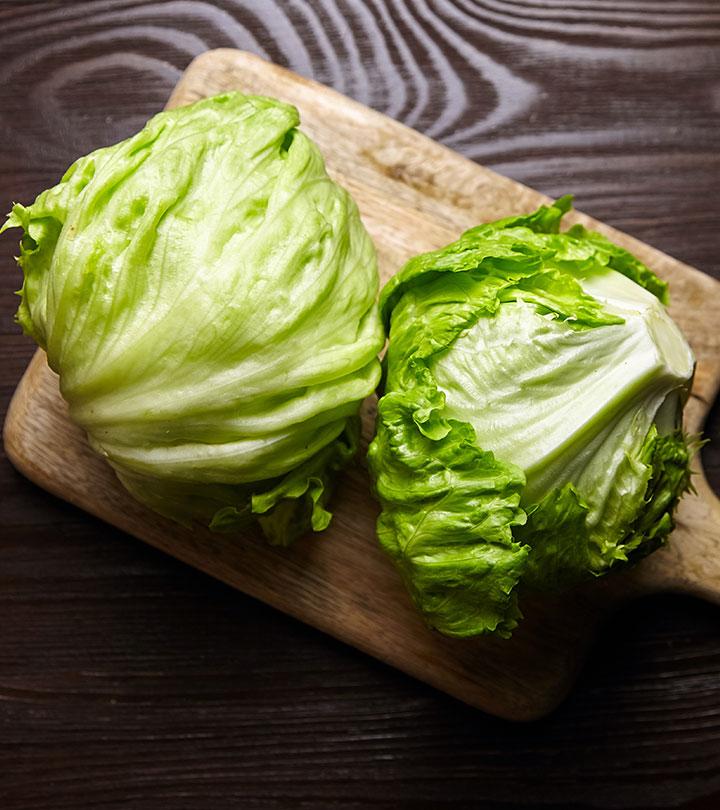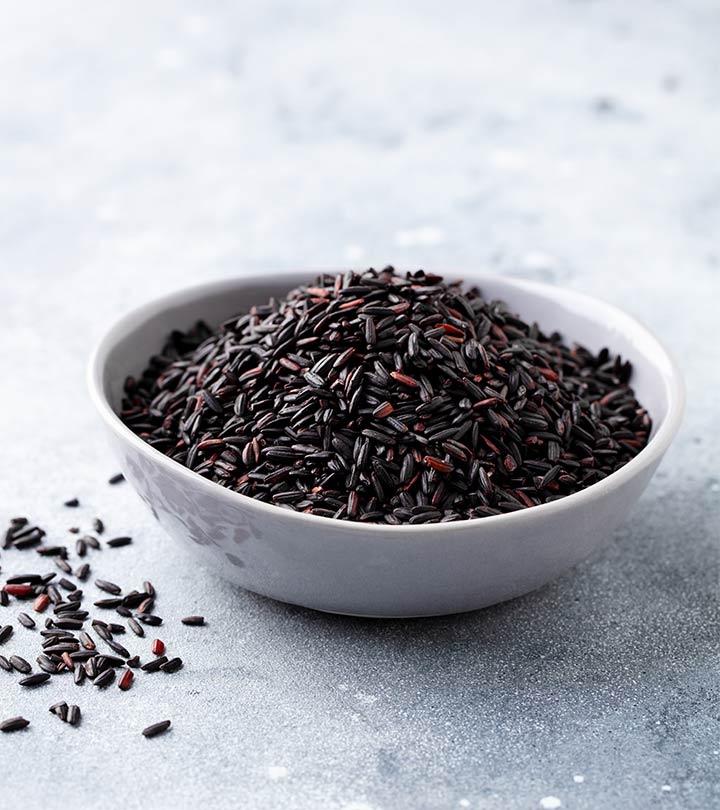Kale Vs. Spinach: Health Benefits, Nutritional Facts, & Risks
Salads are now more delicious and nutritious thanks to these new green veggie stars.
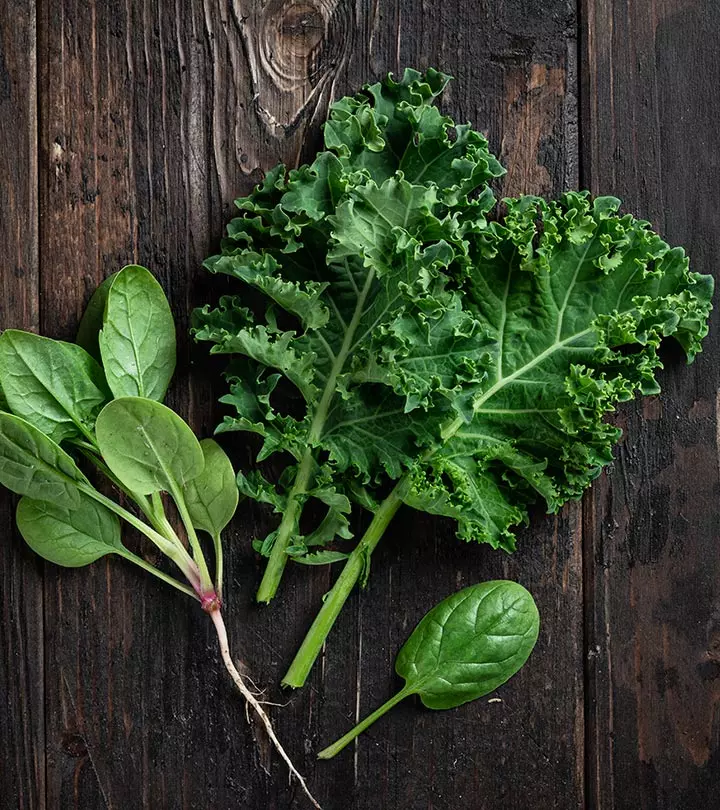
Image: Shutterstock
Spinach and kale are the forerunners when it comes to the battle of the greens. Both are known to be highly nutritious and beneficial to your overall health when included in your diet. But is one better than the other? Do both have similar nutrients? Can you eat them raw? Let’s find out how kale vs. spinach fare against each other when it comes to taste, nutrition, health benefits, and any potential side effects.
In This Article
About Kale And Spinach
Kale belongs to the Brassica oleracea plant family and is at times referred to as leaf cabbage. Kale is a closer cousin of the wild cabbage. Kale leaves are edible and have a slightly bitter, peppery aftertaste. However, a few varieties of kale are not edible and are strictly ornamental.
Spinach belongs to the Caryophyllales order of leafy flowering plants native to western and central Asia. It is part of the amaranth family of plants and is closely related to quinoa and beetroots. Spinach has a mild flavor and can be eaten raw or cooked.
 Did you know?
Did you know?While both are nutrient-dense leafy vegetables that can make for a well-balanced, wholesome meal, there are a few differences in their nutritional composition and health benefits thereof. Let’s see how they compare against each other in the sections below.
Nutrition Facts: Kale Vs. Spinach
Both spinach and kale are highly nutritious, low-calorie leafy greens that can enrich your diet with many important vitamins and minerals.
According to the USDA, here’s how a 100g serving of kale and spinach compare to one another (1), (2):
| Kale | Spinach | |
|---|---|---|
| Calories | 49 kcal | 23 kcal |
| Water | 89.6 g | 91.4 g |
| Carbohydrates | 8.8 g | 3.6 g |
| Fat | 0.9 g | 0.4 g |
| Protein | 2.8 g | 2.9 g |
| Fiber | 4.3 g | 2.2 g |
| Calcium | 150 mg | 99 mg |
| Iron | 1.5 g | 2.7 g |
| Magnesium | 47 mg | 79 mg |
| Potassium | 491 mg | 558 mg |
| Folate | 31 µg | 194 µg |
| Vitamin A | 500 µg | 469 µg |
| Vitamin C | 120 mg | 28.1 mg |
| Vitamin K | 704.8 µg | 482.9 µg |
| Beta-carotene | 2870 µg | 5630 µg |
While both kale and spinach offer similar nutrients, there are a few key differences as well. For instance, kale contains more than twice the amount of calcium, fiber, and vitamin C, while spinach provides more vitamin K, vitamin A, magnesium, iron, and folate.
Both contain varying amounts of several important micronutrients including vitamin A and riboflavin.
Even with their varied nutrient concentrations, they both make for a healthy addition to your diet. Including either of them in your daily meals can benefit you in several important ways.
Comparing Kale And Spinach: What Are The Health Benefits?
Kale and spinach with their similar nutrient profiles, provide us with comparable health benefits as well. Let’s see how.
- Rich In Healthy Dietary Fiber
Kale has twice the amount of dietary fiber than spinach (1), (2). Fiber helps improve your digestion and regularize bowel movements. Additionally, it also helps lower the risks of obesity, diabetes, cardiovascular, and gastrointestinal diseases (3), (4). It is important to add dietary fiber to your meals, given that most people fall short of the daily recommended allowance of fiber (5).
- Rich In Immunity-boosting Antioxidants
Spinach and kale are both important sources of antioxidants like beta-carotene, lutein, and the vitamins A, C, and K. Antioxidants help get rid of toxic free radicals in your body, prevent oxidative damage, and protect you against chronic diseases like diabetes, cancer, and cardiovascular diseases (6), (7), (8).
- May Help Improve Heart Health
Including kale and spinach in your diet has also been shown to improve heart health by reducing various risk factors like high blood pressure and high levels of cholesterol. A 12-week study in men with high cholesterol reported that drinking kale juice along with your meals might help improve your cholesterol levels (9).
Similarly, spinach with its dietary nitrates was found to be effective in improving both systolic and diastolic blood pressure (10).
Quercetin and kaempferol, two important flavonoids found in both kale and spinach have been shown to help lower high blood pressure levels and improve your overall cardiovascular health overall (11).
- Might Help Fight Cancer
Both the leafy green vegetables contain certain bioactive compounds that have shown promising cancer-fighting properties (1313), (14). These compounds have also helped enhance the effectiveness of different cancer treatments by inhibiting the growth and spread of cancer cells (15).
- Might Aid Weight Loss
Kale and spinach both have a high content of water. They provide you with about 90g of water per 100g serving (1), (2). They are also high in important nutrients and low in fats and calories. Adding these low-calorie, energy-dense leafy greens to your diet might prove beneficial in your weight loss plans (16), (17).
- May Help Prevent Birth Defects
Spinach contains more than twice the amount of folate as in kale and can be a healthy addition to your diet during pregnancy (1), (2). Folic acid, derived from folate, may be effective in preventing neurological defects like spina bifida in developing fetuses. Women of reproductive age and planning to conceive are recommended a daily intake of 0.4‐1.0 mg of folic acid as dietary supplements (18).
- May Be Good For Your Bones
Kale and spinach are both high in calcium and vitamin K. While kale has more than twice the amount of calcium in spinach, the latter has more vitamin K (1), (2). Calcium and vitamin K are vital nutrients that help improve and maintain your bone health reducing the risks of osteoporosis (19).
Hannah Cutting Jones, a blogger, acknowledges the challenges faced by kale lovers but offers practical suggestions to address the concerns, such as thorough washing, freezing, and alternative cooking methods. Additionally, she adds, “I am going to keep eating kale, in spite of this bump in our otherwise fabulous friendship (i)!”
While the above benefits might encourage you to include kale and spinach regularly in your diet, you should also be aware of their potential side effects and risk factors.
Kale Vs. Spinach Risks
There are a few things you should keep in mind before including kale and spinach in your diet.
- Kidney Stones
Spinach contains large amounts of dietary oxalate, a compound that binds to and prevents calcium absorption in your body (20). A higher intake of oxalate-rich foods might lead to the formation of calcium oxalate kidney stones (21), (22). Hence, people with a higher risk of kidney stones should limit their intake of spinach and other oxalate-rich foods (23). Boiling spinach might be effective in reducing the dietary oxalate concentration by up to 87% (24).
- Bacterial Contamination
Leafy greens, especially when eaten raw, might lead to food poisoning and bacterial contamination. In a major E.coli outbreak in 2006, 80% of the cases were traced to spinach contamination (25). Another analysis in 2013, reported 6.6% of the samples of farmed spinach tested positive for the bacteria (26). Similar contamination with E.coli and salmonella can also be found in kale due to poor cultivation and handling practices (27).
 Quick tip
Quick tip- Thyroid Imbalance
Kale and other cruciferous vegetables like broccoli and brussels sprouts are known to contain goitrin. It is a compound that may potentially lower the iodine levels, leading to an imbalance in the production of thyroid hormones (28). While spinach may also contain goitrin, it is usually less in comparison to kale. Also, it is better to consume them cooked as that seems to help reduce the potential risks (29).
Well, even with the above side effects, the health benefits of kale and spinach outweigh their potential risks and make them a healthy addition to your diet. Going further let’s see how you can include these nutrient-dense leafy greens in your diet.
How To Prepare Kale And Spinach?
When it comes to flavor and texture, spinach is more tender, delicate, and mild, in comparison to kale. This makes it easier to incorporate spinach in a variety of dishes. It can be eaten blanched and pureed, added to soups, and gravies. You can also use raw spinach to make healthy green smoothies, salads, and sides. Its mild flavor combines well with rice, pasta, eggs, and beans as well.
On the other hand, kale is slightly tough and bitter with a peppery taste. You should look for fresh and firm dark green leaves. Try to avoid purchasing brown or wilted leaves and remember to remove its tough middle portion to avoid the bitter taste. While spinach tends to wilt faster on cooking, kale can withstand longer cooking times and thus work better for stew, saute, or baked kale chips. If you find the flavor of kale too pungent, you can mix it along with other greens or opt for baby kale that is milder in taste.
While the pros and cons of kale vs. spinach have been heavily debated, there is no clear winner. Both greens have the same nutritional profile and offer the same health benefits. They may help reduce the risk of cardiovascular disorders, and gastrointestinal issues, and improve bowel movement due to their rich dietary fiber content. They are good sources of antioxidants that promote overall health. It all comes down to individual preferences and so, experiment with both veggies to understand the flavor and taste nuances between the two. However, when consumed in excess, they can cause problems. If you experience any adverse effects, limit its use and seek medical advice.
Frequently Asked Questions
Can I replace spinach with kale?
Yes. You can use kale for spinach in many recipes. But choose the right type of kale depending on the recipes you prepare. Kale works great as a substitute for spinach in soups, casseroles, or salad.
Is kale or spinach better in a smoothie?
Spinach is the best option to add to a smoothie because of its mild taste and the presence of antioxidants, vitamin A, and minerals like potassium, magnesium, and iron.
Is kale good for hair growth?
Kale is good for hair growth and is said to strengthen hair strands. However, there is no direct evidence linked to it. Hair growth is influenced by various factors like genetics, hormones, and overall nutritional intake (30) (31) (32). Since kale is packed with nutrients, including it in your diet may contribute to overall well-being, potentially benefiting your hair indirectly. But it is not a guaranteed solution for hair growth.
Is spinach bad for acid reflux?
There is no direct evidence that suggests that spinach may be bad for acid reflux. In fact, research suggests that it may have an acid-neutralizing effect on the body (33). However, individual reactions vary and you may experience acid reflux with spinach. Anecdotal evidence suggests that eating too much spinach may cause some discomfort and, in some cases, acid reflux as well.
Key Takeaways
- Both kale and spinach are highly nutritious leafy vegetables with many health benefits.
- Intake of these greens may help improve digestion, prevent oxidative damage, and improve heart health.
- However, the dietary oxalate and goitrin in them may cause kidney stones and thyroid imbalance.
- Also, consuming raw leafy greens can cause bacterial contamination.
Both spinach and kale are powerhouses of nutrition and offer impressive health benefits. Check the video below to find out how you can incorporate spinach and kale into your diet to fetch optimum benefits!
Personal Experience: Source
StyleCraze's articles are interwoven with authentic personal narratives that provide depth and resonance to our content. Below are the sources of the personal accounts referenced in this article.
(i) Kale, No! The Dark Side of Leafy Greenshttps://hannahcuttingjones.wordpress.com/2014/04/09/kale-no-the-dark-side-of-leafy-greens/
References
Articles on StyleCraze are backed by verified information from peer-reviewed and academic research papers, reputed organizations, research institutions, and medical associations to ensure accuracy and relevance. Read our editorial policy to learn more.
- Spinach raw
https://fdc.nal.usda.gov/fdc-app.html#/food-details/168462/nutrients - Kale raw
https://fdc.nal.usda.gov/fdc-app.html#/food-details/323505/nutrients - Health benefits of dietary fiber
https://pubmed.ncbi.nlm.nih.gov/19335713/ - Dietary Fiber Is Beneficial for the Prevention of Cardiovascular Disease: An Umbrella Review of Meta-analyses
https://www.ncbi.nlm.nih.gov/pmc/articles/PMC5731843/ - Closing America\’s Fiber Intake Gap
https://www.ncbi.nlm.nih.gov/pmc/articles/PMC6124841/ - Effects of different cooking methods on the antioxidant capacity and flavonoid organic acid and mineral contents of Galega Kale (Brassica oleracea var. acephala cv. Galega)
https://www.ncbi.nlm.nih.gov/pubmed/30037287 - Impact of spinach consumption on DNA stability in peripheral lymphocytes and on biochemical blood parameters: results of a human intervention trial
https://www.ncbi.nlm.nih.gov/pubmed/21384253 - Oxidative stress prooxidants and antioxidants: the interplay
https://pubmed.ncbi.nlm.nih.gov/24587990/ - Kale juice improves coronary artery disease risk factors in hypercholesterolemic men
https://www.ncbi.nlm.nih.gov/pubmed/18548846 - Effect of Spinach a High Dietary Nitrate Source on Arterial Stiffness and Related Hemodynamic Measures: A Randomized
Controlled Trial in Healthy Adults - Dietary Quercetin and Kaempferol: Bioavailability and Potential Cardiovascular-Related Bioactivity in Humans
https://www.ncbi.nlm.nih.gov/labs/pmc/articles/PMC6835347/ - MGDG extracted from spinach enhances the cytotoxicity of radiation in pancreatic cancer cells
https://www.ncbi.nlm.nih.gov/pmc/articles/PMC5120455/ - Anti-tumor effect of orally administered spinach glycolipid fraction on implanted cancer cells colon-26 in mice
https://www.ncbi.nlm.nih.gov/pubmed/18594894 - Dual roles of sulforaphane in cancer treatment
https://pubmed.ncbi.nlm.nih.gov/22583415/ - Attenuation of Carcinogenesis and the Mechanism Underlying by the Influence of Indole-3-carbinol and Its Metabolite 33\’-Diindolylmethane: A Therapeutic Marvel
https://pubmed.ncbi.nlm.nih.gov/24982671/ - Dietary energy density in the treatment of obesity: a year-long trial comparing 2 weight-loss diets
https://www.ncbi.nlm.nih.gov/pubmed/17556681 - Provision of foods differing in energy density affects long-term weight loss
https://www.ncbi.nlm.nih.gov/pubmed/15976148 - Folic acid supplementation for pregnant women and those planning pregnancy: 2015 update
https://www.ncbi.nlm.nih.gov/labs/pmc/articles/PMC4738404/ - Essential Nutrients for Bone Health and a Review of their Availability in the Average North American Diet
https://www.ncbi.nlm.nih.gov/labs/pmc/articles/PMC3330619/ - Calcium intake and urinary stone disease
https://www.ncbi.nlm.nih.gov/pmc/articles/PMC4708574/ - Nutritional Management of Kidney Stones (Nephrolithiasis)
https://www.ncbi.nlm.nih.gov/pmc/articles/PMC4525130/ - Clinical Practice Calcium Kidney Stones
https://www.ncbi.nlm.nih.gov/pmc/articles/PMC3192488/ - Medical and Dietary Therapy for Kidney Stone Prevention
https://www.ncbi.nlm.nih.gov/pmc/articles/PMC4265710/ - Effect of different cooking methods on vegetable oxalate content
https://www.ncbi.nlm.nih.gov/pubmed/15826055 - FDA warns US consumers not to eat spinach after E coli outbreak.
https://www.ncbi.nlm.nih.gov/pmc/articles/PMC1584385/#:~:text=About%2080%25%20of%20the%20infected - Generic Escherichia coli Contamination of Spinach at the Preharvest Stage: Effects of Farm Management and Environmental Factors
https://www.ncbi.nlm.nih.gov/pmc/articles/PMC3697504/ - Bacterial contamination of kale (Brassica oleracea Acephala) along the supply chain in Nairobi and its environment
https://pubmed.ncbi.nlm.nih.gov/24968591/ - Concentrations of thiocyanate and goitrin in human plasma their precursor concentrations in brassica vegetables and associated potential risk for hypothyroidism
https://www.ncbi.nlm.nih.gov/pubmed/26946249 - Naturally Occurring Food Toxins
https://www.ncbi.nlm.nih.gov/pmc/articles/PMC3153292/ - An overview of the genetic aspects of hair loss and its connection with nutrition
https://www.ncbi.nlm.nih.gov/pmc/articles/PMC9710406/ - Effects of hormones and endocrine disorders on hair growth
https://www.ncbi.nlm.nih.gov/pmc/articles/PMC9788837/ - Diet and hair loss: effects of nutrient deficiency and supplement use
https://www.ncbi.nlm.nih.gov/pmc/articles/PMC5315033 - A comparative study of the antacid effect of raw spinach juice and spinach extract in an artificial stomach model
https://www.ncbi.nlm.nih.gov/pmc/articles/PMC5315033
Read full bio of Dr. Sandeep Jassal
Read full bio of Ravi Teja Tadimalla
Read full bio of Aparna Mallampalli





